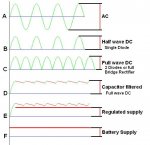i have circuits connected parallel to a 5v dc 1200 mA power supply
two xbee modules , axe033 ,28x1
also buzzer ,switches , relays, LEDs--->power from microcontroller of Xbees and 28x1,
the problem is sometimes LCD fade out specially when output device like an led or buzzer turned on also sometimes xbee modules doesn't work reliable
while when i use batteries ex.. for each circuit a 3 AA batteries the circuits works fine..
is that a problem because of the current
if so.. im planning to buy a power supply that has higher current around 5A
but i dont know if that going to damage something
two xbee modules , axe033 ,28x1
also buzzer ,switches , relays, LEDs--->power from microcontroller of Xbees and 28x1,
the problem is sometimes LCD fade out specially when output device like an led or buzzer turned on also sometimes xbee modules doesn't work reliable
while when i use batteries ex.. for each circuit a 3 AA batteries the circuits works fine..
is that a problem because of the current
if so.. im planning to buy a power supply that has higher current around 5A
but i dont know if that going to damage something

